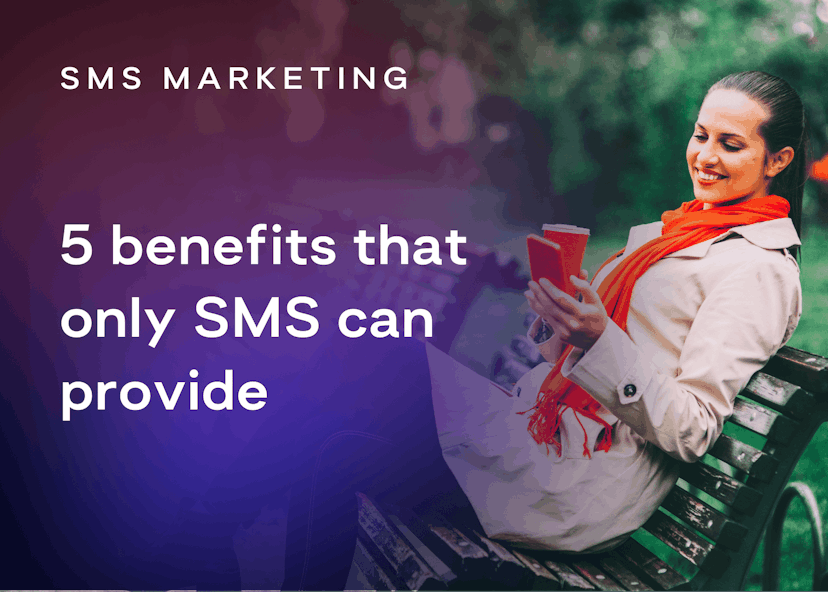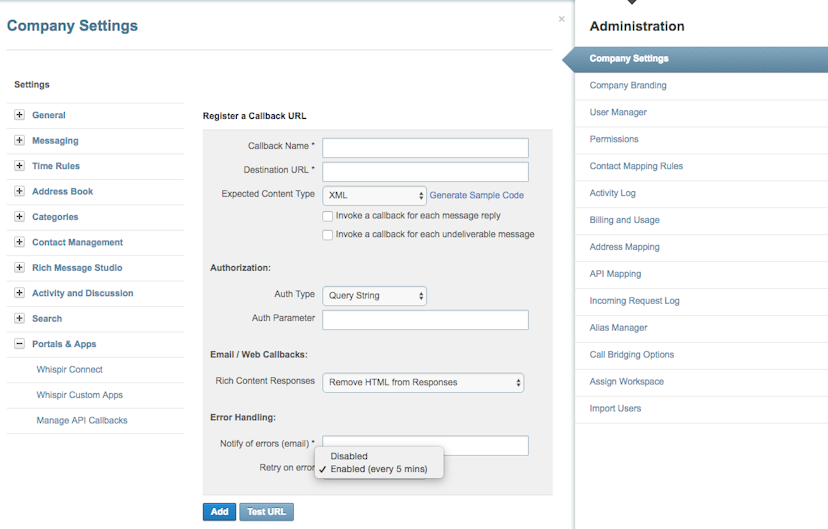For decades, the name of the game has been email. Whether you’re a small business looking to gain a foothold in your local community or a large business looking to clear up inventory, email was probably the first place you went for your external communications. And it makes sense. However, times are changing.
Today, businesses need to be able to cut through the noise that is endless email outreach, anonymous phone calls, and physical junk mail, and embrace the one communication channel that’s timely, personalized, and all but guaranteed to get your messages read and actioned on – SMS.
Of course, that all sounds great, but like any business looking to be strategic with their communications, some proof is required. And, we have just the thing to help – our 2023 SMS Marketing Report & Buyer’s Guide.
Now, let’s look at why you should be sending text messages if you want to see a high ROI.
1. Increased visibility
If you’re not currently reading this on your phone, then you’re already in the minority. In fact, the majority of your customers are spending most of their time on mobile – an extra 23 minutes per day since 2018. Talk about undivided attention.
Plus, with 82% of U.S. smartphone owners reading every SMS they’re sent, there’s no channel quite like SMS when it comes to getting your messages out. When it comes to marketing, this is often the most important aspect – the views – right after the treasured conversion. For not-for-profits and charity organizations, simply getting the message read can make all the difference when it comes to donor engagement.
2. Swift interactions
SMS is the fastest and most reliable method for getting recipients to take timely action. SMS messaging is particularly advantageous for B2C outfits, as many campaigns are driven around specific holidays, inventory changes, specific events, cultural happenings (TV shows, political changes, etc.), as well as upcoming deals and last-minute sales.
According to HubSpot’s collection of marketing stats, 40% of consumers say they have at least 50 unread emails in their inboxes, which means you can’t afford to let your messages sit in an email inbox until long after your sale or CTA has expired.
3. Large recipient pool
Projected at 7.26 billion mobile users in 2022, mobile engagement only continues to increase year over year. In fact, it’s estimated that only 3% of the world’s population is currently without a smartphone. Paired with near-100% open rates, businesses engaging in SMS communication can expect an all-but-guaranteed ROI for their efforts.
For businesses looking to create long-term loyalty and access the most influential demographic, it’s worth noting that in 2021, 28% of 18–29-year-olds in the U.S. were solely smartphone-dependent. This means they’re not accessing the internet on anything other than their phone, which also means your text messages are bound to catch them right where they are.
4. Personalized outreach
While email allows you to specify per contact, it comes with a mountain of limitations, including spam triggers, outdated user addresses, firewalls, and the list goes on. Meanwhile, with bulk SMS deliverability rates reaching 94%, you can all but guarantee you’re not missing any eyes or ears on your communications.
According to McKinsey & Company, 71% of consumers expect a personalized experience, which means you should be leveraging business SMS software that allows you to boost engagement with branded, easy-to-build communications – without any additional coding or technical staff required. Essentially, doing more with less.
Features you should look for in an SMS platform include drag-and-drop message builders, templates that can be easily rebranded and deployed quickly, artificial intelligence that helps you write messages that are on-tone, and rich personalization functionalities, to name a few.
5. Better results (vs email)
So far, we’ve discussed the power of SMS, but let’s really dig into the differences between the two powerhouse communication channels used today – SMS and email.
Did you know:

Additionally, Statista reports that in December of 2021, spam messages accounted for 45.37 percent of email traffic. This means it’s likely that your email messages aren’t being read at all.
Not to mention, according to LinkedIn, consumers are 4.5x more likely to reply to an SMS marketing message than a marketing email, and 86% of businesses who use texting find it generates higher engagement than email.
Bonus benefit: Instant mobile payments
With an integration like Pay by Text, businesses can create a better experience for sellers and buyers alike. By offering a full payment journey via a user’s native text message app, you can decrease collection time, drive more sales, boost payment activity, and more.
Get more with Whispir
With most conversions typically driven by spur-of-the-moment decision-making or a “right time, right place” mentality, businesses need communications that can attract, engage, and retain audiences as quickly as possible. This makes SMS messaging a necessity. However, what’s better than one communication channel? All of them.
Whispir is an omnichannel communication platform that brings SMS, email, voice, video, RSS, social, and more, all under one digital roof. This means you can combine the near-100% engagement rates of SMS with the time-tested tactics you’ve leveraged in the past. Plus, you can offer more ways to engage, including linking to personalized microsites where you can host unique forms, offer additional services, answer questions, and more.











